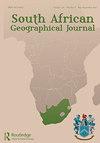津巴布韦布拉瓦约城市绿地改善气温的程度、范围和价值
IF 1.4
4区 社会学
Q3 GEOGRAPHY
引用次数: 10
摘要
城市绿化为城市居民提供各种各样的商品和服务。其核心是改善城市热岛效应。然而,来自温带地区的许多估计不能外推到热带地区,热带地区需要更多的实证研究来指导城市规划和优化绿色基础设施的设计和分布。本研究报告了冬季和夏季12个城市绿地与周围已建成的城市矩阵之间随着距离的增加而增加的两周读数的温差。此外,还计算了城市绿化为空调节省的能源成本。绿地与周边建成区的平均温差为3.6°C,夏季为0.9 ~ 6.1°C,冬季为0.9 ~ 5.7°C。降温效应延伸至1.7公里外的绿地中心。随着绿地面积的增加,降温幅度略有增加。这些冷却效果转化为每户每年节约约532美元的能源成本。鉴于津巴布韦疲软的经济和收入,这一节省是相当可观的,可以促进城市中更多绿色空间的多重动机。本文章由计算机程序翻译,如有差异,请以英文原文为准。
The degree, extent and value of air temperature amelioration by urban green spaces in Bulawayo, Zimbabwe
ABSTRACT Urban greenery provide a variety of goods and services to city dwellers. A core one is amelioration of the urban heat island effect. However, the many estimates from temperate regions cannot be extrapolated to the tropics, where more empirical studies are required to guide urban planning and optimization of green infrastructure design and distribution. This study reports on the temperature differentials in fortnightly readings, in winter and summer, between 12 urban green spaces and the surrounding built-up urban matrix at increasing distances from each green space. Additionally, the value of energy costs saved for air conditioning by urban greenery was calculated. The mean difference in temperature between green spaces and neighbouring built-up areas was 3.6°C, and in summer ranged from 0.9°C to 6.1°C and in winter 0.9°C to 5.7°C. The cooling effects extended up to 1.7 km beyond the centre of green spaces. The magnitude of cooling increased slightly with increasing green space size. These cooling effects translated into a cost on energy saving of approximately US$532/household/yr. Given the weak economy and incomes in Zimbabwe, this saving is considerable and can contribute to the multiple motivations for more green spaces in the city.
求助全文
通过发布文献求助,成功后即可免费获取论文全文。
去求助
来源期刊

South African Geographical Journal
GEOGRAPHY-
CiteScore
3.40
自引率
7.10%
发文量
25
期刊介绍:
The South African Geographical Journal was founded in 1917 and is the flagship journal of the Society of South African Geographers. The journal aims at using southern Africa as a region from, and through, which to communicate geographic knowledge and to engage with issues and themes relevant to the discipline. The journal is a forum for papers of a high academic quality and welcomes papers dealing with philosophical and methodological issues and topics of an international scope that are significant for the region and the African continent, including: Climate change Environmental studies Development Governance and policy Physical and urban Geography Human Geography Sustainability Tourism GIS and remote sensing
 求助内容:
求助内容: 应助结果提醒方式:
应助结果提醒方式:


